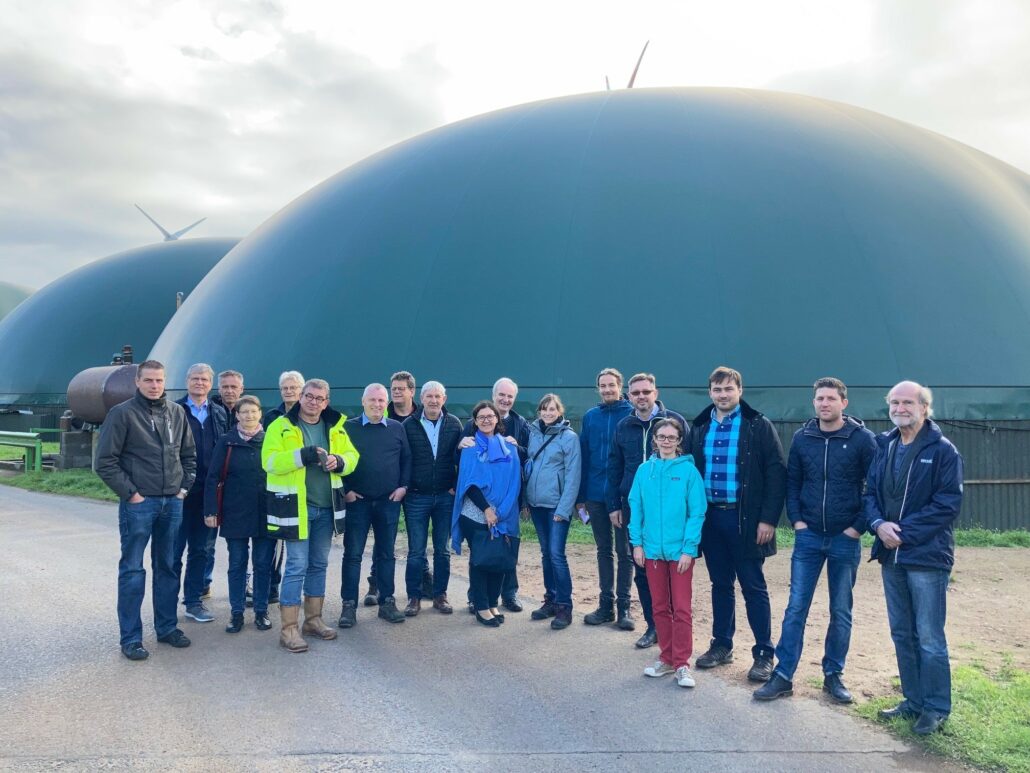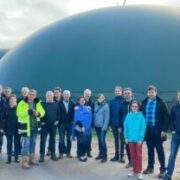Living labs meeting a Groot Zevert demo plant

The H2020 project SYSTEMIC organised a Living Lab meeting and site visits to demonstration plant Groot Zevert Vergisting (GZV, Netherlands) and Benas (Germany). Highlight of the two-day visit was the new paper moulding machine at BENAS were organic fibres from digestate are turned into cardboard products.
At the first day, the group of representatives of 6 SYSTEMIC Outreach Locations, 3 Demo Plants and 1 Associated Plant met in Beltrum, located in an agricultural area in the eastern part of the Netherlands.
Here they were able to discuss the business cases their biogas plant, regarding digestate treatment with nutrient recovery, exchange experiences and look into possibilities for the future. Afterwards, they received a detailed presentation on Demo Plant GZV, to prepare them for their site visit that afternoon.
GZV turns pig slurry and residues from agro-industry into 9.7 million m3 of biogas, organic- and mineral fertilising products and clean water. The solid fraction of digestate is exported to Germany whereas the liquid fraction is further processed into an RO concentrate with 7.6 g N/kg in mineral form. This fertiliser complies with criteria for RENURE products and GZV has a temporary exemption to use RO concentrate on top of the limit of 170 kg N/ha thereby replacing synthetic nitrogen fertilisers. By separating digestate into tailor-made fertilising products, GZV has reduced digestate transport by 55% as compared to the old situation in which unseparated digestate was exported to Germany. GZV also invested in an technique to separate the solid fraction into a low-P organic fibres and precipitated P salts. The perspectives of using organic fibres from digestate as potting soil ingredient draw the attention of the audience.
On the second day, the group travelled to Benas in Ottersberg, Germany, where 87 kton of energy crops and poultry litter are converted into 10 million m3 biogas. The plant is equipped with a novel nitrogen stripper (FiberPlus system) ammonia stripped from the digestate, and condensed as an ammonia solution reacts with gypsum forming ammonium-sulphate and calcium carbonate. Gypsum is a cheap waste product from desulphurisation of exhaust gasses of coal-fired electricity plants and this approach avoids using sulphuric acid which is normally used in N strippers. Highlight of the trip was the extraction of organic fibres from the striped digestate. These fibres, with a low ammonium content, are further processed by a paper making machine into cardboard pots and mulch mats.
The thirty visitors came from Belgium, Netherlands, Germany, Austria and Croatia and are all working in the biogas sector. They all valued having had the opportunity to share their own practical experiences on biogas production and digestate processing. Overall, this first meeting after easing of the covid-19 restrictions and sadly last meeting in the framework of the SYSTEMIC project turned out to be fruitful and inspiring.




